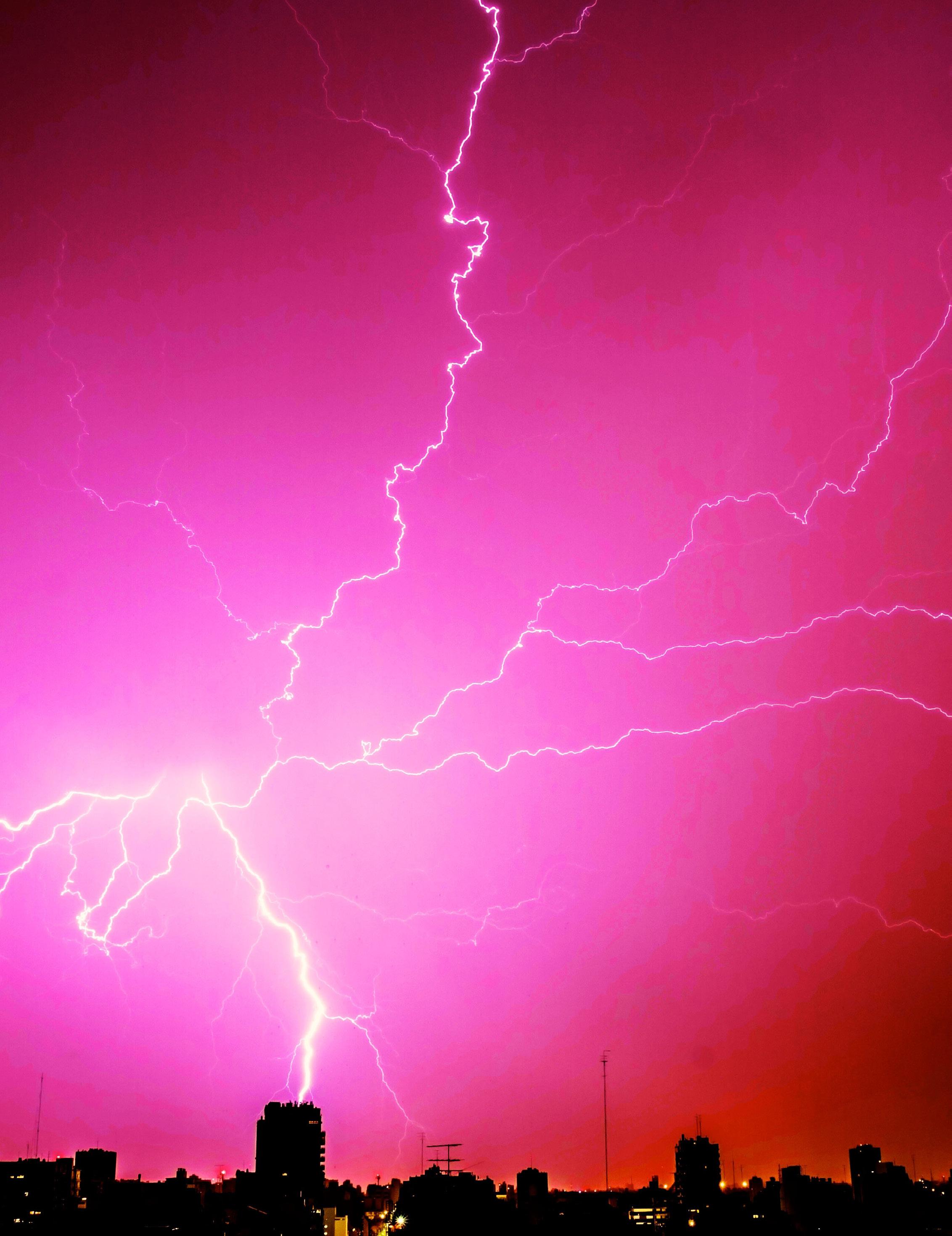SA’s power struggle:


JULY I AUGUST 2023
WELCOME LETTER
AT A recent event, Rising Young Stars, in Cape Town, which celebrated and awarded young upcoming chefs in the hospitality industry, I was fortunate to sit at the same table as Pavitray Pillay, an environmental behaviour change practitioner and WWFSassi manager.
We spoke about the energy crisis in South Africa.
She said the ripple effect the blackouts could and were having were profound.
“We have built societies that operate around electricity… I am surprised how complacent South Africans are about it… I do not think they realise the full extent of the impact of black outs,” she said.
Pillay then described how, for instance, load shedding was causing astronomical
Publisher:

Editorial: Design:

food wastage in homes, big companies and retailers when a generator does not kick in and refrigerated food is damaged or has to be refrozen.
Added to that, chatting to Dr Anthony Turton on the way he believes load shedding is hitting our water supply –negatively – made me realise that if we have societies built on energy, much more is at stake if the energy collapses.
This month, we explore how the crisis is having a ripple effect on our lives. We were also fortunate to get Lungile Mashele, an energy economist and a member of the Black Power Group, to give her opinion on whether a grid collapse was possible.

Warm regards VIVIAN WARBY
Independent Media.
Vivian Warby Kim Stone
SALES:
New Business Development Executive: Mike Nt s asa.
Head of Sales: Charl Reineke
To advertise in this magazine or in an array of our national print titles please contact mikent s asa@inl.co.za or charl.reineke@inl.co.za
02 ENERGY TODAY JULY I AUGUST 2023 PICTURE
BEKKER / PEXELS 2 LETTER 3 OUR ENERGY CRISIS 4 HARD TRUTH ABOUT OUR WATER SUPPLY 6 HOUSING MARKET HIT 7 THE EXPENSE OF GOING OFF THE GRID 9 TOTAL GRID COLLAPSE HOW LIKELY IS IT? 13 SNIPPETS 14 HOW TO AVOID ILLNESS DURING LOAD SHEDDING CONTENTS JULY I AUGUST 2023
GEORGE
OUR ENERGY CRISIS
THE RICOCHET EFFECT OF LOAD SHEDDING – HOW IT HITS OUR FOOD AND WATER SUPPLY, THE HOUSING MARKET AND OUR BOTTOM LINE… PLUS, IS A TOTAL GRID COLLAPSE POSSIBLE?

PICTURE VALDEMARAS D BBJ13LH04X / UNSPLASH
03 ENERGY TODAY JULY I AUGUST 2023 PICTURE IGNACIO SOTTANO / PEXELS
Hard truth about OUR WATER SUPPLY
 BY DR ANTHONY TURTON
BY DR ANTHONY TURTON
The Eskom crisis has triggered a domino effect that is cascading across our entire economy and playing havoc with our precious resource
04 ENERGY TODAY JULY I AUGUST 2023
PICTURE MARCO BICCA, JOHNNY MCCLUNG \ UNSPLASH
SOUTH AFRICA has always been a waterconstrained country.
The discovery of gold in 1886 therefore posed a major challenge, which impacted on the way our water and energy systems were engineered over the next century and a half.
The Witwatersrand Goldfields were in the centre of the country, on top of a high-altitude plateau that was so water scarce that only a treeless grassland could exist naturally. The engineering challenges were immense, because water had to be pumped from distant sources to supply the growing Witwatersrand economy. This required large amounts of energy.
In fact, about 10% of the energy budget in a typical Gauteng municipality is for water treatment. But it becomes complicated for two reasons.
First, all our wastewater flows by gravity into large treatment plants. Energy is needed to process the raw sewage, through a cascading process in which oxygen is first added and later removed to create the ideal conditions needed for microbial activity.
At the core is the role played by microbes in digesting waste, and processing nitrogen as it changes form from ammonia to nitrate.If the process is disrupted because of an energy problem, then the bacteria are unable to do their work in making sewage safe.
Second, all our processed sewage is discharged directly into the same rivers from which our drinking water is sourced. This is known as an indirect reuse model, which has worked well for more than a century, but is no longer functional for a variety of reasons.
Collectively, we discharge around five billion litres of sewage daily into our rivers, only about 15% of which is treated to a standard that is safe for recycling back into our drinking water. This is why the
Green Drop Reporting Standard is so important, because it is the guarantee that the effluent going back into our rivers is not harmful to people when reused.
The Eskom crisis has triggered a domino effect that is cascading across our entire economy.
The first domino to fall is the initial pumping of sewage into wastewater treatment works (WWTW). It is a common sight across every town and city to see raw sewage flowing from a manhole, into the nearest river.
This contaminates the raw water from which our drinking water is later produced. The cholera crisis is a current example of this.

sludge dewatering fails. This is what happened at Rooiwal WWTW where the cholera crisis occurred.
When the four dominos fall, the WWTW is overwhelmed, so untreated effluent is discharged into the river, because the system has no storage capacity.
What flows in has to flow out, so disruptions to the electricity supply mean that untreated sewage has to be discharged into the river.
The sewage contaminated water now flows down the river into the first abstraction plant where potable water is produced.
Here, the fifth domino kicks in, because electricity is needed to drive the water through the
reservoirs and water towers full. Without energy, reservoirs run dry, and consumers are left stranded, factories are unable to operate, and hospitals and schools become hazardous places where disease can spread rapidly.
This simplified explanation shows that at least six dominoes inevitably fall in succession, once the first one drops. This is how the energy crisis propagates through the economy, like ripples on a pond, radiating outwards in ever-expanding circles of disruption.
What can the individual person do? There is no easy answer, other than to accept that this is our new reality, and then adapt behaviour accordingly.
The second domino to fall is the injection of oxygen into the sewage on arrival at the WWTW. This is typically done with a bank of turbulators that vigorously stir up the waste, flinging it into the air in square ponds with baffles designed to direct the flow. This energises the bacteria needed to start digesting the organic matter. Without electricity, the turbulators fail, and so the bacteria are starved of oxygen, and they die.
The third domino to fall is the pumping system that separates the solid and liquid material in settling tanks known as clarifiers. The sludge settles to the bottom, where the fourth domino falls when the
various stages of treatment to make it safe for human consumption.
None of our water treatment plants – even the biggest like Rand and Umgeni Water – were designed to render sewage contaminated river water safe for human use.
Once the potable water has been treated, it is pumped over vast distances in high-pressure pipes to the municipalities. This is where the sixth domino kicks in, because the pumps are massive, consuming vast amounts of energy.
On delivery to the municipality, the seventh domino becomes relevant, because smaller pumps keep
Adaptive behaviour embraces a new culture of reuse, recovery and recycling where appropriate. It also requires alternative storage close to the point of use.
There are many point of use solutions being developed, so make use of a reputable service provider to advise on the best choice for your own needs.
This is our New Normal, and it will alter the way we live our lives in future. But it is survivable, so take heart and learn about the options available in the solution space.
Dr Anthony Turton is a specialist in water as a national security risk and holds a professorship at the University of the Free State
05 ENERGY TODAY JULY I AUGUST 2023
LOAD SHEDDING is having a severe impact on water quality.
HOUSING MARKET HIT
Increased electricity costs and the knock-on economic
BY JOHN LOOS
ELECTRICITY is a key operating cost for homeowners and, since around 2008, the cost has been escalating at a rapid rate.
The consumer price index for electricity rose by a massive 447% in the past 15 years, far outpacing how income has been rising, and it shows the extreme electricity-affordability deterioration over the past 15 years.
However, this is not the end of the direct cost impact for homeowners.
The deterioration in reliability of electricity supply means that many homeowners are required to incur additional costs on solutions aimed at improving their electricity-supply reliability.

This can include inverters or solar solutions, to name but two.
Reliable electricity supply has become significantly more important in recent years, for the larger number of employees who spend increased amounts of time working remotely too.
But there are the potential indirect impacts of more expensive and less reliable electricity supply.
Modern economies depend heavily on power supply. The recent heightened levels of the impact of load shedding on economy-wide output/production, in turn, impacts negatively on employment and household income growth. This represents the purchasing power for homes, and less purchasing power (all other things equal) means less homebuying.
The main potential impacts on the housing market:
1 At a macro level, the electricity crisis is a negative influence on housing demand, due to its negative impact on the economy. In the short run, it disrupts economic output directly. In the long run, it dampens investor
confidence and thus investment in the economy, while creating negative sentiment that exacerbates South Africa’s skilled labour emigration rate.
All in all, therefore, it is an economic negative, and an economic negative is a negative for housing demand.
2 Moving down to the more micro level, the direct impact on household disposable income spent on rising power-supply costs means less available income to service a bond or buy a home cash. This means that home demand is probably dampened by this too, or at least it causes many buyers to have to go for cheaper and smaller homes than would otherwise be the case.
3 The electricity-cost challenge will probably escalate the move towards greater urban densification, because smaller residential units, where common amenities can be shared, improve the efficiency of scarce land use and can also contain operating costs, electricity being a key one.
4 In addition, the electricity-supply crisis, coupled with challenges regarding other utilities and municipal services, appear to be leading to an escalating search for regions/towns/suburbs where these things work better.
If certain regions are able to better provide electricity, along with other services and infrastructure, those regions’ economies and housing markets may receive a boost, relatively speaking, from “semigrations” in their direction, thus outperforming the ones with more troubled supply of such services and infrastructure.
5 Increasingly, homes with good alternative power sources may achieve better values than those without.
Loos is an FNB Property strategist
PICTURES COTTONBRO STUDIO / PEXELS 06 ENERGY TODAY JULY I AUGUST 2023
effects of outages have reduced people’s purchasing power when it comes to property
THE EXPENSE OF GOING OFF GRID
WHEN I was asked to write about the barriers to energy solutions, I thought: “I must do some research. I must find the best solutions.”
Then I thought again. The best solutions are usually available for only the high-income groups in society.
For the solutions to become accessible to the lower-income brackets, we need to convince privileged politicians about the disproportionate impacts of load shedding and climate change on the poor, especially women and mothers.
This is a message for mothers.
The information on the use of solar is overwhelming and unaffordable for most South Africans.

But Eskom electricity is not cheap either. For example, mothers in Ocean View are spending 25% of their daily income on electricity. Life stops for them when there is load shedding. Their old battery-exhausted
cellphones don’t last for two hours, nor can they afford either inverters or torch batteries (batteries are expensive). The essentials – light, safety, cooking fuel, and connectivity –are gone during load shedding.
My advice to the moms: find your community. I’ve been asking people what they are doing in their homes. I’ve been asking the people, since the experts offer only R150 000 “solutions” or insist that they have the perfect answer but “they are waiting for the investment environment to be more conducive”.
People have told me that they use car batteries to run their TVs. This isn’t perfect because car batteries are usually made with lead-acid battery and have fewer charging cycles if used for hours but since when did we have alternatives? When I wanted to find a UPS inverter, I went to my community. I found a Facebook post
BY CHRISTY BRAGG
from a mom’s Facebook group and got information on inverters. I bought a UPS inverter for R1 000 but it kept only the wi-fi on and one cellphone. My inverter is not up to charging my old laptop battery, but since when do we have alternatives?
I have to adapt my work to Eskom’s schedule, not my medicationschedule nor my kids’ school schedule nor my work-life balance. I wonder why so many people are feeling controlled by the government?
Someone recently told me that a retailer has solar-powered lanterns for 80 bucks, I intend to check those out too. Another retailer has candles. Another online store has LED lights).
Gas is an alternative. In 2017, I bought a second-hand gas stove from Tears hospice shop and it’s been a supper-saver. But I hesitate about promoting gas. I have seen the research – natural gas doesn’t
bode well as a large-scale bridging solution for the transition from non-renewable energy to renewable energy, as it is promotes reliance on fossil fuel, will cause environmental damage in our oceans and probably increase government debt (Green Connection 2021).
There are negative economical repercussions to investing in gas pipelines and exploration infrastructure which have a 50-to60-year lifespan when the transition timeframe for gas might be only five years. Not to mention a widespread investment in gas would prolong climate change’s impacts on the poor.
What can I suggest? I am at a loss. Many have begged the politicians to hear the “small” voices. Help communities create enabling environments for community-based renewable energy access.
Women, I suggest we make our own plans. Power ourselves up. Do what it takes to help our Mother Earth and our families. We need to help one another.
*Bragg is a nationally recognised climate change leader and conservation biologist. A freelance writer, Bragg has worked for more than 15 years in the sustainable development sector, conservation, climate change adaptation and environmental management.
PICTURE VIVINT SOLAR / UNSPLASH 07 ENERGY TODAY JULY I AUGUST 2023
Until we can convince privileged politicians about the impact on the poor, women need to find their community for solutions

TOTAL GRID COLLAPSE HOW LIKELY IS IT?
It has happened in other parts of the world and if it were to happen in SA, the results would be just as catastrophic. But it probably won’t. Here’s why
BY LUNGILE MASHELE

09 ENERGY TODAY JULY I AUGUST 2023
PICTURE KAIQUE ROCHA / PEXELS
INCREASINGLY, there has been talk of a nationwide blackout that will affect South Africans.
A perfunctory gaze at social media and certain media outlets will show individuals alarmingly prophesying month-long blackouts and Eskom generators blowing up.
The increasing load shedding and talks of stage 16 have not gone unnoticed by false doomsday prophets and individuals who have nary an understanding of how to balance frequency and voltage control of the largest electricity utility in Africa.
Eskom defines a national blackout as the complete, uncontrolled, deenergisation of the power system. It stipulates that generators may “island to house load” and that all customers will lose supply.
Blackouts have happened in numerous countries, such as Canada, Kenya, UK and Argentina, and multiple states in the US in recent years.
Most of the blackouts were a result of natural disasters such as floods, hurricanes
and fires, while others were due to transmission grid failure.
The probability of a blackout in South Africa is almost zero; however, if it were to happen, the impact would be catastrophic. It would impact every sphere of society, such as water, health care, education, financial services, telecommunications and food, and even non-electrical energy supply, such as petrol and diesel.
To give people some perspective: you would not be able to use your phone, get water from a tap, go to work, buy fresh food or withdraw money.

Given that the likelihood is extremely low, let us rather use this opportunity to explain why the possibility of a blackout is unlikely:
1. Eskom transmission maintenance is above 95% completed (Eskom AFS FY2022).
2. The Eskom system operator is one of the most experienced system operators in the world, with experience in managing a supply and demand mismatch for 15 years (several SA engineers are sharing their experience with utilities
in developed countries).
3. The system operator has several tools at its disposal, such as ancillary services and a reserve margin to counter dips in frequency.
4. Eskom has signed agreements with energy intensive users to curtail their load.
5. The NRS 048-9 document gives Eskom the regulatory approval to loadshed up to stage 8, and this will soon be updated to stage 16.
EVEN if the worst were to happen and we went into a national blackout, generators are equipped with the ability to protect themselves by disconnecting from the grid and going into island mode.
The generators would continue generating but not transmit into the grid. Restarting the system in this case would take up to 48 hours.
In the serious case of a blackout where even islanding is not possible, then Eskom would make use of its blackstart facilities to restart the national grid.
10 ENERGY TODAY JULY I AUGUST 2023
There is virtually zero chance of a total black out
PICTURES DAMIAN PATKOWSKI / UNSPLASH, MATHEUS BERTELLI, JACKSON TEE / PEXELS
in South Africa’
The blackstart facilities are generating units that can operate independently of the grid and are used to fire up power stations and gradually restore them to service.

Due to its sheer size, Eskom cannot be assisted by our regional neighbours and that is why a blackstart could take two weeks.
Given the energy crisis affecting all South Africans, we all have a role to play in reducing demand to protect our grid.
All South Africans can reduce demand, especially during peak periods between 5pm and 9pm, by switching off unnecessary lights, as well as geysers and so on.


If every South African were to switch off their geyser during the peak period, Eskom could save 4 000MW.
A system gaining popularity is ripple control, which is a common form of load control used worldwide that controls signals to the receivers’ units. This would enable your municipality or Eskom to switch off your geyser or any other large appliance during the evening peak to
11 ENERGY TODAY JULY I AUGUST 2023
reduce demand or to prevent an outage or load shedding. The systems have been around since the 1970s. Many municipalities ran programmes to install them in the early years of load shedding.
FINALLY, the biggest enabler of a stable grid and that also increases generating capacity is flexible and dispatchable technology, such as gas.
Gas power, with its 30 seconds dispatchable nature, is the perfect counter for possible grid collapse. The Risk Mitigation IPP Programme (RMIPPP) was designed for this exact purpose to give the system operator 2 000MW of additional flexibility when operating a system with increasing renewable energyinduced intermittency, as well as an increasing “duck curve” (the generation pattern reflecting the time of day that the sun shines and wind blows) because of the added complexity of embedded renewable energy.
The RMIPPP focused on gas, as well as battery storage solutions, with the latter being the most expensive option. The gas power
projects, including the 1 220MW of Karpowership projects and the 350MW of gas power integrated with hybrid renewable energy projects, will add urgently needed capacity for at least one stage of load shedding and assist the system operator in countering the increasing volatility of the grid.

The minister of electricity announced recently that it would take three to four months after giving Karpowership the go-ahead for it to deliver electricity into the grid.

A national blackout in South Africa is nearly impossible. The system operator has, on numerous occasions, reiterated the need for flexible and dispatchable technologies in reducing the strain on the grid but has also reiterated the importance of Eskom needing enough time to execute a wellrun reliability maintenance to increase generating capacity in the short to medium term and avoid unplanned generator breakdowns. Facts considered, these are the most immediately available and feasible levers available to Eskom in the short term to reduce or even eliminate load shedding in the next two years.
LUNGILE MASHELE is an energy economist and a member of the Black Power Group, a group of South African energy professionals, practitioners, specialists, investors and advisers who have come together to share knowledge and contribute to the energy security of South Africa in a manner that is transformative and leaves no one behind. It also provides a space for frank engagements that respect divergent views, in pursuit of creating a better South Africa.
It was recently announced that it would take three to four months after giving Karpowership the go-ahead for it to deliver electricity to the grid.

12 ENERGY TODAY JULY I AUGUST 2023
PICTURES
SATYA NEMALA / PEXELS, SUPPLIED
COUNTRIES SPLIT OVER PROLONGING COAL SUBSIDY
EU COUNTRIES failed this month to agree on planned new rules for the bloc’s power market, having clashed over a proposal to extend subsidies for coal plants under the reform, and a push to expand state aid for other power plants.
The EU energy ministers meeting in Luxembourg ended talks without a joint stance on the reforms that seek to avoid a repeat of last year’s energy crisis, when record-high gas prices left consumers with soaring energy bills.
The talks had been complicated by a late proposal by Sweden, which holds the EU’s rotating presidency, to allow countries to prolong capacity mechanism subsidies for coal power plants that pay generators to keep capacity on standby to avoid blackouts.
Swedish Energy Minister Ebba Busch said ensuring Poland, which borders Ukraine, had stable power generation could help it support Ukraine with back-up power.
Poland, which gets around 70% of its power from coal, could prolong its support scheme for coal plants, potentially until 2028, under the proposal.
Countries including Belgium, Germany and Luxembourg had objected, saying the move would undermine Europe’s goals to fight climate change.
The draft proposal would allow capacity mechanisms to temporarily waive a CO2 emissions limit. | REUTERS
Researchers found digesting fish waste allows circular fish and vegetable farms (aquaponics) to produce biogas, which can then be fed back into the farms’ energy systems. This also provides excellent nutrition to the plants. File photo
BIOGAS CAN BE PRODUCED BY FISH FARMS – STUDY
ARESEARCH project at the University of Gothenburg has used waste to create biogas, which can help meet the energy needs of aquaponic farms.
Researchers found digesting fish waste allows circular fish and vegetable farms (aquaponics) to produce biogas, which can then be fed back into the farms’ energy systems.
This also provides excellent nutrition to the plants.
The study was published in the journal “Aquacultural Engineering”.
Aquaponics, or circular, land-based, combined fish and vegetable farms, is growing in popularity. Aquaponics uses nutrient-rich water produced by fish (aquaculture) to fertilise plants (hydroponics) in a closed, soil-less system with the help of bacteria that naturally grow within the systems.
The food production models mimic fertilisation in river and lake ecosystems.
Until now, fish solid waste was a byproduct with no particular value.
However, a research project at the University of Gothenburg has used waste to create biogas, which can help meet the energy needs of aquaponic farms.
“By breaking down fish faecal matter in an anaerobic environment –known as digestion – we can obtain a concentrated gas mixture of 70% methane that can be used as fuel. This can make aquaponics a source of energy,” said Victor Lobanov, a doctoral student of marine biology at the University of Gothenburg.

The study also shows that the nutrients released in the digestion of waste are more easily available for plants compared to synthetic nutrition solutions.
“Fish waste contains a lot of nutrients. These should also be usable in aquaponics to enable even more sustainable food production than today,” said Lobanov.
Another benefit is that carbon dioxide is produced when the biogas is used as fuel, which is a necessary supplement when plants are grown in an enclosed space, like a greenhouse.
For now, the digestion process has been tested in a lab environment, but a pilot in a commercial aquaponics facility is starting this year.
It will give researchers insights into how well the method can handle perturbations to the system and what needs to be done to create a more robust digestion pipeline. | ASIAN NEWS INTERNATIONAL
YOUTH ASK FOR HISTORIC ORDER IN CLIMATE TRIAL
CLARK MINDOCK
A LAWYER for 16 young people has asked a Montana judge for a historic order, declaring the state’s pro-fossil fuel policies violated their rights, wrapping up arguments in the first youth-led US climate change lawsuit to make it to trial.
Judge Kathy Seeley, in Helena, took the case under consideration after hearing from 12 of the plaintiffs. The youth described how the state’s policies were exacerbating climate
change. Nate Bellinger, an attorney for the young people, said during his closing statement that Seeley should issue a judgment that the state’s approval of fossil fuel projects violated a state constitutional guarantee to a “clean and healthful environment”.
Montana Assistant Attorney General Michael Russell countered that the courts were no place to set climate policy, and the plaintiffs hadn’t proved that Montana’s small emissions could be blamed for a global crisis.
The trial began on June 12, three years after the youth plaintiffs, now between the ages of five and 22, filed their lawsuit. It is one of several youth-led constitutional climate cases pending in courts across the US.
Attorneys for the state said the youth had failed to target a specific policy upon which relief could be granted. Government officials said agencies like the Montana Department of Environmental Quality did not have the authority to deny lawful permits. | REUTERS

13 ENERGY TODAY JULY I AUGUST 2023
PICTURSES
/
/ UNSPLASH
SNIPPETS
EKATERINA BOLOVTSOVA
PEXELS, HUY PHAN
KATE ABNETT
PICTURE HUY PHAN UNSPLASH
PICTURES
HUY PHAN/ UNSPLASH, EKATARINA BOLOVTSOVA / PEXELS
POWER CUTS AND FOOD SAFETY:
HOW TO AVOID ILLNESS DURING LOAD SHEDDING
SOUTH AFRICA has been grappling with power cuts for 15 years, which have worsened in recent years. The persistent power outages have disrupted every facet of life, including food safety. The Conversation Africa’s Ina Skosana spoke to food safety expert Lise Korsten, from the University of Pretoria, about the impact of persistent power cuts on the food in our homes and the best ways to protect ourselves.
How should we manage the food in our fridges?
The reality is that load shedding for extended periods is causing temperature fluctuations in our fridges, particularly if the fridge is regularly opened during load shedding or has old rubber sealants. Temperature fluctuations can make food go bad.
To start with, let’s consider “what’s in our fridges”, “do we really need to keep so much perishable food in our fridges” and “how safe is it, given current load shedding schedules”.
Load shedding is forcing us to think about food safety and spoilage, our general behaviour in terms of food purchases, storage, managing our fridges, hygiene and the use of leftover food.
We need to ask ourselves: “Are we buying more food than we should, and are we not wasting more food?”
Perhaps we should consider a more minimalist lifestyle if we are to survive the economic downturn and manage the impact of load shedding.
Keeping too much food in a fridge increases the potential risk of food-borne illness, given our energy crisis. In short, households need to better manage the food in their fridges and keep as little of it as possible.
What’s the best way to avoid illness?

Keep your fridge – and kitchen – clean. Doing so will reduce the potential of organisms that can proliferate in these environments and cause illnesses, such as food poisoning. There are a few ways to maintain hygiene:
✦ Regularly clean your fridge and keep a special eye on obvious potential contamination points such as areas where, for instance, the blood from raw meat dripped onto the bottom shelf.
✦ Defrost your freezer to remove any ice that is building and can affect the performance of the freezer.
✦ Fridges often maintain the temperature more effectively for longer periods due to new, well-fitting seals. If it’s an older fridge and the rubber seals are broken or the door doesn’t close properly, temperature fluctuations are more likely to occur.
✦ A good rule is also to keep your fridge closed during load shedding and pack higher-risk items towards the back where less temperature fluctuations will occur. The door of the fridge is a higher-risk area because of higher temperature fluctuations. This is important since we often keep milk in this compartment, thereby increasing the risk of it going off before the use-by date.
Why does fridge temperature matter?
We don’t get sick from just one organism. We get sick from a certain number of tiny organisms. What is important to keep in mind is that some microorganisms can multiply rapidly – in fact some every 20 minutes, others even every 10 minutes.
Environmental conditions, such as fluctuating temperatures, will influence how many organisms are present at a certain point in time and can multiply. If the food is kept at temperatures that fluctuate, it will encourage rapid growth of microorganism to levels high enough to cause illness by the time the food is consumed.
In general, microorganisms can multiply at temperatures between 4°C and 60°C. The temperature range is often called the “danger zone” in food safety. Some of the organisms prefer room temperature to rapidly multiply. Leaving food outside the fridge is, therefore, risky behaviour since you do not know
14 ENERGY TODAY JULY I AUGUST 2023
Hygiene in the kitchen is essential and so too is relooking at the amount we keep, as well as how we prepare and store our edibles
PICTURES
LOUIS HANSEL / UNSPLASH, DIVA PLAVALAGUN / PEXELS
if food is contaminated with pathogens or general spoilage can occur. The strategy is, therefore, to prevent contamination or “slow down” the growth of organisms through effective cold chain management.

It’s also important to remember that not all microorganisms are enemies. Less than 1% make us sick. We need to understand the microbial balance in nature and manage the system to our benefit.
Is it safe to eat leftovers?
It’s interesting to mention a study where waste-pickers were asked how they knew when food was safe to eat. They explained reliance on basic skills and instinct, which means sensory parameters: smelling if food is off, touch (that slimy feeling), that “look” (texture and offish) and memory – once you have been sick from a specific food item your body will instinctively react (almost like a shiver down the spine).
The instincts are important and, in a way, a survival skill, so be stringent when keeping leftover food. If you do keep leftovers, try to consume it as soon as possible, preferably the next day.
Also, if you heat something, do so properly. A golden rule is to avoid reheating food, especially not more than once. Keep in mind that microorganisms can survive high and low temperatures, and can rapidly multiply during the cooling periods. Your timeline for safety is reduced the longer you keep your food and expose it to fluctuating temperatures.
If possible, make sure you prepare enough food for only one meal, and try to keep fewer leftovers in your fridge. We should also start thinking about eating smaller portions and asking ourselves: “Do our bodies really need that volume of food?”
What to do?
Plan meal portions, preparation and serving times around load shedding, and manage the food in the fridge more wisely. – excerpts from a piece in The Conversation.

15 ENERGY TODAY JULY I AUGUST 2023











Have you discovered tHese digital magazines yet? To receive all our FREE digital magazines directly to your mailbox, email digimags@inl.co.za with the word Digital. click Here to read our magazines now. Advertising Sales queries: Charl Reineke | charl.reineke@inl.co.za







 BY DR ANTHONY TURTON
BY DR ANTHONY TURTON



























